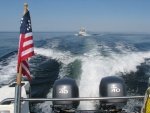You're very welcome Vern. Glad I could help. Plus as a bonus, you're motor is newer than you thought! :thupnordicstallion":ylvolkil said:Thank you Peter, you are truly a wonderful human being!! I did indeed find my motor on the Browns Marine site you brought to my attention. Not only do I see two internal anodes,skillfully hidden & unmentioned in the motor manual,but also found that my motor is a 2004 by the serial numbers. I was supplied with a 2003 motor df70 manual when I bought the boat. Probably not much, if any, difference but good for my piece of mind & I can certainly use all the pieces of my mind I can get!!
Peter

